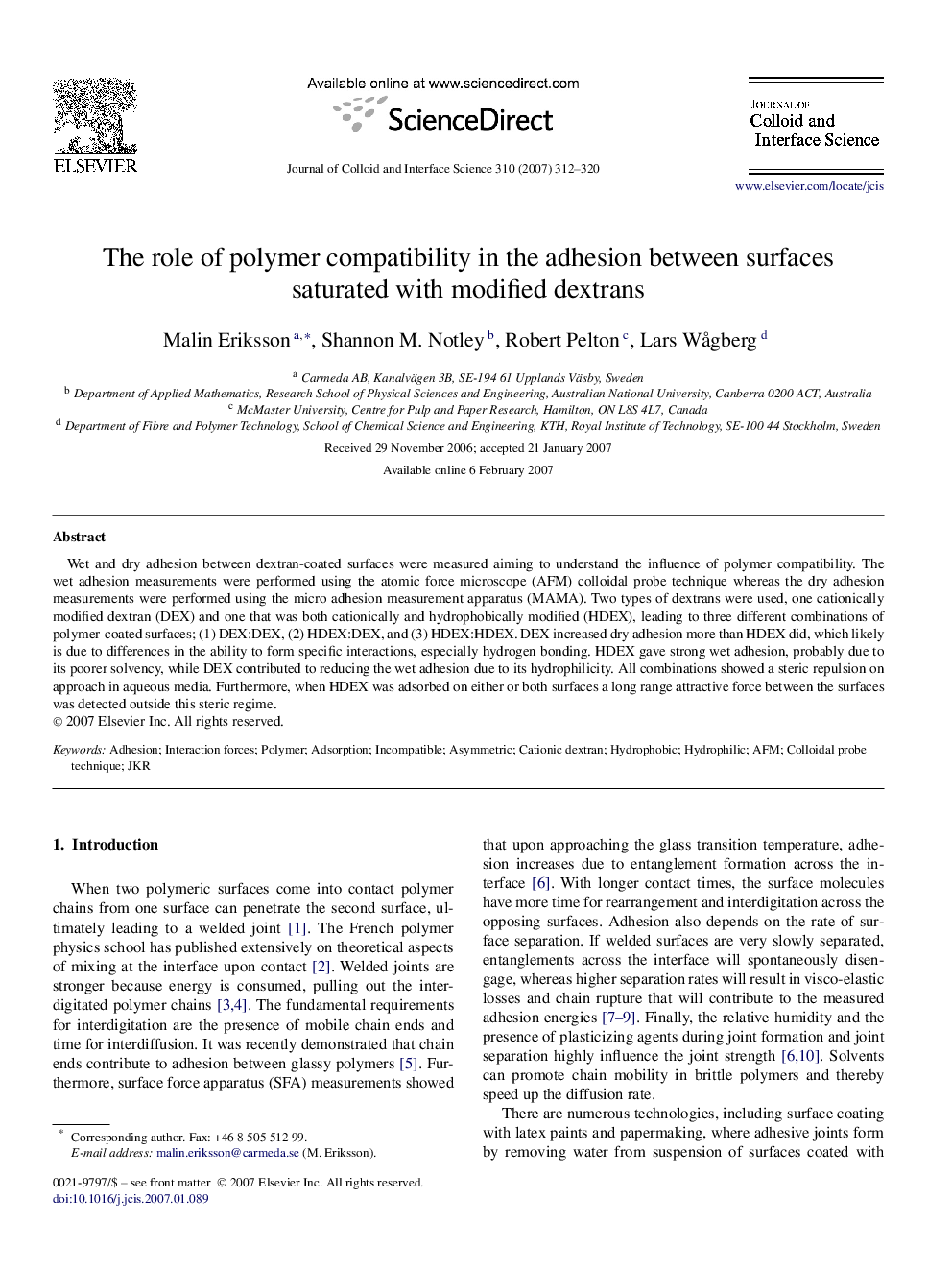| کد مقاله | کد نشریه | سال انتشار | مقاله انگلیسی | نسخه تمام متن |
|---|---|---|---|---|
| 612343 | 880695 | 2007 | 9 صفحه PDF | دانلود رایگان |

Wet and dry adhesion between dextran-coated surfaces were measured aiming to understand the influence of polymer compatibility. The wet adhesion measurements were performed using the atomic force microscope (AFM) colloidal probe technique whereas the dry adhesion measurements were performed using the micro adhesion measurement apparatus (MAMA). Two types of dextrans were used, one cationically modified dextran (DEX) and one that was both cationically and hydrophobically modified (HDEX), leading to three different combinations of polymer-coated surfaces; (1) DEX:DEX, (2) HDEX:DEX, and (3) HDEX:HDEX. DEX increased dry adhesion more than HDEX did, which likely is due to differences in the ability to form specific interactions, especially hydrogen bonding. HDEX gave strong wet adhesion, probably due to its poorer solvency, while DEX contributed to reducing the wet adhesion due to its hydrophilicity. All combinations showed a steric repulsion on approach in aqueous media. Furthermore, when HDEX was adsorbed on either or both surfaces a long range attractive force between the surfaces was detected outside this steric regime.
The importance of polymer compatibility was studied in adhesion measurements using dextran (DEX) and hydrophobically modified dextran (HDEX). It was anticipated that the incompatible pair (HDEX:DEX) would give the weakest adhesion.Figure optionsDownload as PowerPoint slide
Journal: Journal of Colloid and Interface Science - Volume 310, Issue 1, 1 June 2007, Pages 312–320